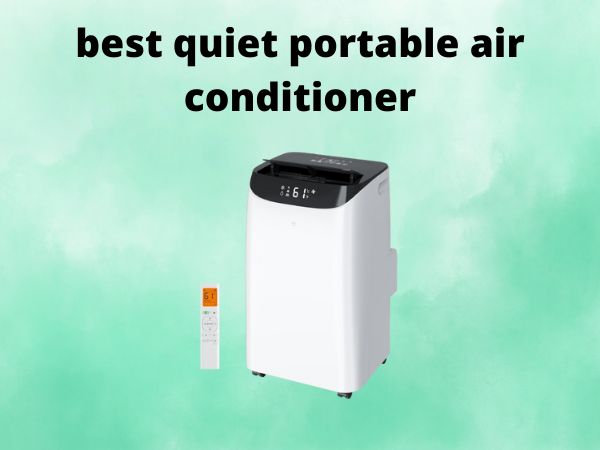How to Get Mold Out of an Air Conditioner Safely
Mold can be the uninvited guest that overstays its welcome in your air conditioning unit. It’s sneaky, stubborn, and can wreak havoc not just on your unit, but also on your health. Ever wonder how you can efficiently and safely evict this unwanted intruder? You’re in the right place! Let’s dive into a straightforward guide on how to get that mold out for good.
Table of Contents
Understanding Mold and Its Effects on Air Quality
Before we tackle the removal process, let’s pause and understand what mold is and why its presence in your AC can be detrimental.
What is Mold?
Mold is a type of fungus that thrives in damp, dark environments. It often appears as a black, green, or white fuzzy growth on various surfaces. It’s not just unsightly; its presence hints at moisture problems, which can be more widespread than they appear.
Impact on Health and Air Quality
Mold spores can float through the air like unwelcome confetti, entering your lungs and causing symptoms akin to allergies—think sneezing, coughing, and watery eyes. For those with asthma or weakened immune systems, mold can be even more dangerous.
Signs You Might Have Mold in Your Air Conditioner
Not all heroes wear capes, and in this case, early detection can save the day. Look out for these signs:
- Musty odors similar to forgotten gym bags.
- Visible mold growth on or inside the AC unit.
- Frequent allergy-like symptoms when the AC is running.
Safety First: Preparing for Mold Removal
Before you roll up your sleeves, safety is non-negotiable. Let’s ensure you’re geared up for the task.
Gather the Right Equipment
- Protective gloves and masks to guard against mold spores.
- A spray bottle for applying cleaning solutions.
- Soft brush or sponge to gently scrub the surfaces.
Turning Off the Power
Get acquainted with your circuit breaker, because the last thing you want is a shock while handling moisture and electricity. Shut down the power to the unit before starting any cleaning.
Step-by-Step Guide to Cleaning Mold from Your Air Conditioner
Here comes the nitty-gritty you’ve been waiting for. Follow these steps to ensure a thorough cleaning.
Step 1: Remove and Clean Filters
Your AC filter is like a sieve, trapping debris and, unfortunately, mold. Remove it and wash it with a mixture of warm water and mild detergent. Allow it to dry completely before reinserting.
Step 2: Clean the Coil and Drip Pan
The coil and drip pan are prime spots for mold growth due to their constant exposure to moisture. Use a mixture of one part bleach to ten parts water, apply it, and scrub gently.
Step 3: Apply a Mold Inhibitor
Once the cleaning is done, apply a mold inhibitor to the cleaned surfaces. This acts as a barrier, making it harder for mold to re-establish its hold. Be sure to choose a product that is safe for air conditioning systems.
Preventing Future Mold Growth in Your AC
Congratulations on cleaning your AC! Now, like a watchful guardian, let’s ensure mold doesn’t creep back in.
Ensure Proper Ventilation
Good ventilation keeps moisture levels in check. Make sure vents are unobstructed and consider installing a dehumidifier if moisture is consistently high.
Regular Maintenance Checks
Consider setting a seasonal reminder to inspect and clean your unit. Like going to the dentist, regular check-ups can prevent larger issues down the line.
Check for Water Leaks
Leaky ducts or seals can create unwanted moisture. Address these issues promptly to remove the breeding ground for mold.
When to Call in the Professionals
There are times when a professional touch is warranted. But how do you know when to call in the experts?
Extent of Mold Growth
Is the mold widespread even after your thorough cleaning, or is it in hard-to-reach places? A professional can assess and treat those stubborn spots safely.
Persistent Health Problems
If health symptoms persist despite your efforts, it may be time to engage a pro to ensure comprehensive cleaning and air quality testing.
Conclusion
Evicting mold from your air conditioner might not be the most glamorous task, but with the right knowledge and tools, you can protect your home and health. Regular maintenance and vigilance are your best allies in this fight. Now go on, and breathe easy!
FAQs
Can mold in air conditioners be dangerous?
Yes, mold can trigger allergic reactions and respiratory issues, especially in those with pre-existing conditions.
What causes mold in an air conditioner?
Mold thrives in damp, humid environments, often due to excess moisture in the system’s coils or drip pan.
How often should I clean my AC filters?
It’s recommended to clean them every month during peak usage seasons to ensure optimal performance and reduce mold growth.
Is bleach safe to use on air conditioner components?
Yes, when diluted properly, bleach can effectively kill mold on non-porous surfaces within the AC unit.
How can I improve the air quality in my home?
Improving ventilation, regular cleaning of your HVAC system, and using dehumidifiers can greatly enhance air quality.



